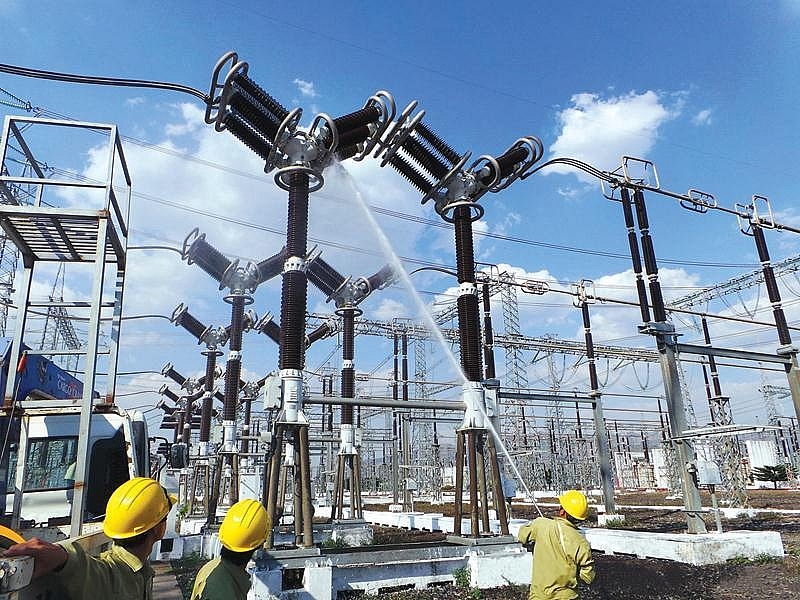Brighter prospects in SOE divestment
 |
| Many SOEs have applied disruptive technologies such as Big Data, AI, and Internet of Things to boost business efficiency |
Last year SOEs reported VND3.015 quadrillion ($131.1 billion) in total asset value, up 3 per cent, while revenue totalled VND1.605 quadrillion ($69.8 billion), up 8 per cent, and pre-tax profit jumped by 26 per cent to touch VND167.6 trillion ($7.3 billion).
These enterprises contributed VND219.5 trillion ($9.5 billion) to the state coffers, which is 5 per cent most than in 2016. Most reported debt over equity ratios of less than 3x (in the safety zone) with an average ratio of 1.25x.
As for restructuring, by the end of 2017 a total of 74 SOEs had completed equitisation, equal to 54 per cent of the target set for the 2016-2020 period. About 79 per cent of the state capital divestment target for the period had been reached, bringing the state VND198 trillion ($8.6 billion) in total capital.
| The state capital ratio in the fields and areas where the state does not need to take control has been gradually reduced and seen positive movements. |
The path to restructuring
The equitisation plans of infrastructure management businesses such as Haiphong Port, Saigon Port, and Danang Port JSC have complied with the development orientation set by the government with the state retaining 65 per cent, while initial encouraging results were posted with the restructuring plans of many farms and forest plantations.
During their restructuring process, several corporations and business groups have set forth the target to reach the regional level.
Accordingly, 18 wholly state-owned corporations and groups have been running 110 outbound investment projects worth $12.6 billion in total committed capital, focusing on telecommunications, petroleum exploration and exploitation, growing rubber trees, and mineral extraction.
Encouraging results were also noted in the process of tackling the 12 notorious major loss-making investment projects in the industry and trade sector, and the financial situation of several underperforming corporations and groups in the sector has markedly improved.
Inspection, investigation, and auditing activities were handled with the organisations and individuals related to these loss-making projects and reported initial encouraging results, raising warnings to deter reiterations.
Notwithstanding, the operational efficiency of the SOE sector generally falls below expectations and is incommensurate with their actual potential and resources, while the labour productivity as well as production and business efficiency remains low, and current corporate governance mechanism has yet to reach international standards.
Measures recommended
The following six groups of measures are recommended to bring turnaround in the general situation in the forthcoming time.
First, perfecting the regulatory system, creating a full, consistent, and united legal corridor to restructure and improve efficiency is a must. Changes have to be made to existing wage and income mechanisms at SOEs to motivate labour productivity improvements.
Second is focusing resources to radically tackle loss-making corporations, business groups, as well as ineffective investment projects of SOEs. The third measure is using part of the proceeds raised from the equitisation process to feed projects and works of national significance with ripple effects socially and economicall, cementing and developing several state groups of large scale and effective business to reach the regional and international level in core fields of the economy.
Next is pushing up the pace of equitisation, state capital divestment, and restructuring of public administrative units, raising the accountability of ministries, sectors, local governments, state groups, and corporations, particularly those tasked with monitoring.
The fifth factor is carrying out reviews and perfecting the criteria set to assess the operation efficiency of SOEs, people who represent state capital in businesses, and business executives.
Finally, we must boost the efficiency of operation and management and the competitiveness of state-owned enterprises, and raise the capacity of their management cadres.
What the stars mean:
★ Poor ★ ★ Promising ★★★ Good ★★★★ Very good ★★★★★ Exceptional
Related Contents
Latest News
More News
- Businesses ramp up production as year-end orders surge (December 30, 2025 | 10:05)
- Vietjet chairwoman awarded Labour Hero title (December 29, 2025 | 13:06)
- How to unlock ESG value through green innovation (December 29, 2025 | 10:03)
- AI reshapes media and advertising industry (December 29, 2025 | 08:33)
- FPT and GELEX sign deal to develop blockchain tech for global markets (December 29, 2025 | 08:29)
- Vietnam’s GDP forecast to grow by 9 per cent in 2026 (December 29, 2025 | 08:29)
- Women entrepreneurs are key to Vietnam’s economic growth (December 29, 2025 | 08:00)
- Vietnam's top 500 value-creating enterprises announced (December 27, 2025 | 08:00)
- The PAN Group shaping a better future with ESG strategy (December 26, 2025 | 09:00)
- Masan Consumer officially lists on HSX, marking the next phase of value creation (December 25, 2025 | 13:20)

 Tag:
Tag:



























 Mobile Version
Mobile Version